Blogs posted in 2017
Cookie Drop Block for Episerver 11
![]()
A new version of the cookie drop block for Episerver is now available on the Episerver Nuget feed that is compatible with Episerver 11.
Cookie drop block allows editors to publish a block that when used on a page drops a cookie on the user machine.
Cookie visitor group criteria for Episerver 11
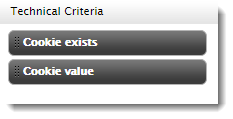 A new version of the cookie visitor group criteria is now available on the Episerver Nuget feed that is compatible with Episerver 11.
A new version of the cookie visitor group criteria is now available on the Episerver Nuget feed that is compatible with Episerver 11.
The package adds two new visitor groups called "Cookie exists" and "Cookie Value Equals". These visitor groups allow your site editors to personalise content based on whether a cookie exists or on the value contained within a cookie.
Visitor Group Usage Viewer for Episerver 11
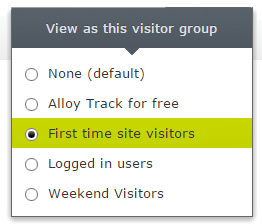 A new version of the Visitor Group Usage Viewer is now available on the Episerver Nuget feed that is compatible with Episerver 11.
A new version of the Visitor Group Usage Viewer is now available on the Episerver Nuget feed that is compatible with Episerver 11.
The visitor group usage viewer adds a new component that shows the visitor groups that are used on the current content item when in Episerver edit mode. It also separately shows any content that's referenced on the current content item (such as blocks or pages in a content area) as this could also affect the rendering of the current piece of content:
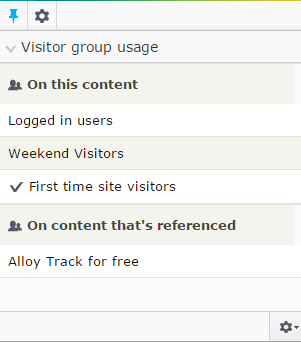
How do I get it?
Tokenised content in Episerver
 I've occasionally seen the requirement for tokenised content in Episerver. By tokenised I mean the ability to insert a token such as [ContactUsEmail] or [Telephone] site wide and have it populated based on values set at a site/section level. This allows site editors to set the value of a token once and have it populated across the site.
I've occasionally seen the requirement for tokenised content in Episerver. By tokenised I mean the ability to insert a token such as [ContactUsEmail] or [Telephone] site wide and have it populated based on values set at a site/section level. This allows site editors to set the value of a token once and have it populated across the site.
Visitor Group Usage Viewer for Episerver 10
 A new version of the Visitor Group Usage Viewer is now available on the Episerver Nuget feed that is compatible with Episerver 10.
A new version of the Visitor Group Usage Viewer is now available on the Episerver Nuget feed that is compatible with Episerver 10.
The visitor group usage viewer adds a new component that shows the visitor groups that are used on the current content item when in Episerver edit mode. It also separately shows any content that's referenced on the current content item (such as blocks or pages in a content area) as this could also affect the rendering of the current piece of content:
A/B test an entire journey using Episerver Visitor Groups and Episerver A/B testing
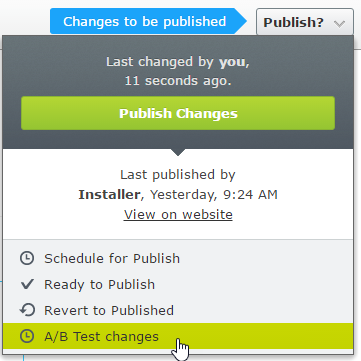 This post describes how to use Episerver A/B testing and Episerver Visitor Groups to test an entire customer journey against a Episerver A/B test KPI.
This post describes how to use Episerver A/B testing and Episerver Visitor Groups to test an entire customer journey against a Episerver A/B test KPI.
Why would you want to personalise based on a running A/B test?
Sometimes A/B testing an individual piece of content isn’t enough to really prove an outcome. A simple example could be does the text “Continue” or “Next” work best on a button on a checkout path. The button exists on multiple content items so would need to be changed in multiple places. By using Episerver Visitor Groups it should be possible to test multiple pieces of content on a site using visitor groups based on a running A/B test.
Options for migrating to Episerver Digital Experience Cloud Service
 Episerver Digital Experience Cloud service (DXC-S) can host multiple customer sites in a single Episerver instance running on a single codebase. This is run on the cloud as a managed service delivered by Episerver and costed on a consumption based model. This is a good approach for organisations that want to share the consumption and managed service offered by DXC-S across brands/sites/countries/anything they wish. However it's not always possible to migrate multiple sites to Episerver Digital Experience Cloud Service (DXC-S) in one go and customers often may need or want to take a phased approach. It may not also be possible to run all sites off a single codebase. So this post describes some approaches when migrating to DXC-S.
Episerver Digital Experience Cloud service (DXC-S) can host multiple customer sites in a single Episerver instance running on a single codebase. This is run on the cloud as a managed service delivered by Episerver and costed on a consumption based model. This is a good approach for organisations that want to share the consumption and managed service offered by DXC-S across brands/sites/countries/anything they wish. However it's not always possible to migrate multiple sites to Episerver Digital Experience Cloud Service (DXC-S) in one go and customers often may need or want to take a phased approach. It may not also be possible to run all sites off a single codebase. So this post describes some approaches when migrating to DXC-S.
Unique voucher/coupon codes in Episerver Commerce using Episerver Campaign
 Using Episerver Commerce it’s possible to offer discounts to customers using the built in discount engine. Discounts can also have a coupon code associated meaning only customers who know that code can get the discount. However, it’s not possible to assign individual coupon codes for customers using Episerver Commerce alone. On the other hand Episerver Campaign can create, allocate and distribute unique coupon codes to customers.
Using Episerver Commerce it’s possible to offer discounts to customers using the built in discount engine. Discounts can also have a coupon code associated meaning only customers who know that code can get the discount. However, it’s not possible to assign individual coupon codes for customers using Episerver Commerce alone. On the other hand Episerver Campaign can create, allocate and distribute unique coupon codes to customers.
Preventing editors approving their own content using Episerver approval sequences
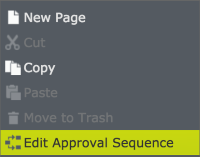 Episerver approval sequences are a great way of controlling how editors get their content signed off by visually defining a set of approval steps that content must go through before it’s considered approved. In organisations that have compliance requirements a common requirement is that editors should not be able to publish their own content. This has already been covered here: Adding custom logic to your publishing step.
Episerver approval sequences are a great way of controlling how editors get their content signed off by visually defining a set of approval steps that content must go through before it’s considered approved. In organisations that have compliance requirements a common requirement is that editors should not be able to publish their own content. This has already been covered here: Adding custom logic to your publishing step.
Creating a "submitted form" KPI for Episerver A/B testing
 Often for non-commerce sites getting forms filled in and submitted is one of the most common goals of a site, usually for lead generation or to collect some other kind of user information that can be used by the organisation such as newsletter sign ups. In order to get people to fill in on-site forms editors should be able to experiment with their content to try and encourage users to fill in forms on their site(s). To help with this Episerver has built in A/B testing capabilities to allow users to experiment with different content versions measured against a KPI that’s the desired outcome. However there is no default KPI to check if a user submits a form.
Often for non-commerce sites getting forms filled in and submitted is one of the most common goals of a site, usually for lead generation or to collect some other kind of user information that can be used by the organisation such as newsletter sign ups. In order to get people to fill in on-site forms editors should be able to experiment with their content to try and encourage users to fill in forms on their site(s). To help with this Episerver has built in A/B testing capabilities to allow users to experiment with different content versions measured against a KPI that’s the desired outcome. However there is no default KPI to check if a user submits a form.
Hiding required properties on the create new page in Episerver
 By default Episerver will show all required properties on the create new screen. I guess that it's presumed that the content cannot be created without these properties existing which in many cases is true (e.g. setting a list root). However in many cases I've seen the [Required] attribute used where the content could be created/edited without the property existing but we need to stop the content being published without it (see my note on using IValidator's later in this post).
By default Episerver will show all required properties on the create new screen. I guess that it's presumed that the content cannot be created without these properties existing which in many cases is true (e.g. setting a list root). However in many cases I've seen the [Required] attribute used where the content could be created/edited without the property existing but we need to stop the content being published without it (see my note on using IValidator's later in this post).
Customising best bet behaviour in Episerver Find
 This post describes how it's possible to customise how best bets behave in Episerver Find. It uses an example of matching best bets for specific Episerver locales.
This post describes how it's possible to customise how best bets behave in Episerver Find. It uses an example of matching best bets for specific Episerver locales.
By default Episerver only allows editors to define best bets for site(s) and/or language(s) defined for your site. This works well in most cases, however in scenarios where a site is set up to serve different countries using localisation of the same language it may not work as expected.
Restricting access to Episerver Commerce Markets for specific users
 Markets is a feature in Episerver Commerce that allows the catalog and items like pricing to be segmented. However when using Episerver Commerce it's not possible to lock catalogue editors down to particular markets meaning all editors can access/edit catalogue entries and prices for all markets. In scenarios where we may only wish user to see particular markets and edit prices for those markets this may be an issue.
Markets is a feature in Episerver Commerce that allows the catalog and items like pricing to be segmented. However when using Episerver Commerce it's not possible to lock catalogue editors down to particular markets meaning all editors can access/edit catalogue entries and prices for all markets. In scenarios where we may only wish user to see particular markets and edit prices for those markets this may be an issue.
This post describes a method that allows users to only edit product data and pricing for markets they have been given access to.
SMTP mail configuration for Episerver Digital Experience Cloud Service
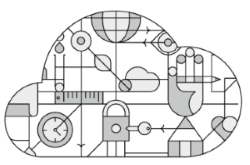 When purchasing Episerver Digital Experience Cloud Service customers get access to a SendGrid account to send mail. This configuration is not automatically applied by the standard config transforms applied by Episerver so you need to configure them manually.
When purchasing Episerver Digital Experience Cloud Service customers get access to a SendGrid account to send mail. This configuration is not automatically applied by the standard config transforms applied by Episerver so you need to configure them manually.
This post is a "note to self" to remember the SMTP settings for Episerver Digital Experience Cloud Service in web.config:
MenuPin v10.1 - Supports Episerver Find
A new version of MenuPin has been released that supports Episerver Find. It works in the same way as MenuPin for other Episerver modules:
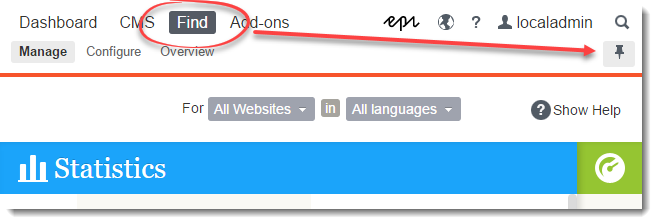
MenuPin v10 for Episerver 10 released
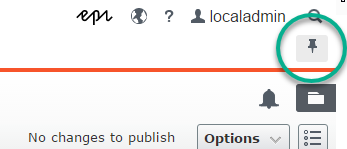
A new version of MenuPin has been released and is available on the Episerver Nuget feed. It contains the following changes:
What's new in v10.0:
- Made package into a stand alone Dojo add-on - see upgrade recommendation below
- Fixes an issue where MenuPin breaks views without the global menu
- Version jump to v10 to keep parity with major Episerver versions
- Minor code refactoring
Using TinyPNG to automatically compress images in Episerver
 We all know that large image size is a killer for site performance. So it's always recommended that images are optimised. Episerver already has the awesome ImageResizer plugin for Episerver which can be used to compress and resize images.
We all know that large image size is a killer for site performance. So it's always recommended that images are optimised. Episerver already has the awesome ImageResizer plugin for Episerver which can be used to compress and resize images.
However, when working on some recent proof of concepts it was noticed that the ImageResizer plugin did not perform too well with transparent PNGs. One of best tools around for compressing PNG's is TinyPNG. On testing it particularly seems to excel with transparent PNG's. So this blog shares some code that shows how it's possible to optimise image size on upload using the TingPNG.com API:
Episerver 2016 - a year in review
 It has been a successful year for Episerver with ongoing platform developments, acquisitions, open source modules being released and developer meet ups taking place across the world. These all contributed to an exciting 2016 and an even more exciting 2017 ahead. This post is a quick write up to try and summarise some of the highlights from 2016 in Episerver.
It has been a successful year for Episerver with ongoing platform developments, acquisitions, open source modules being released and developer meet ups taking place across the world. These all contributed to an exciting 2016 and an even more exciting 2017 ahead. This post is a quick write up to try and summarise some of the highlights from 2016 in Episerver.